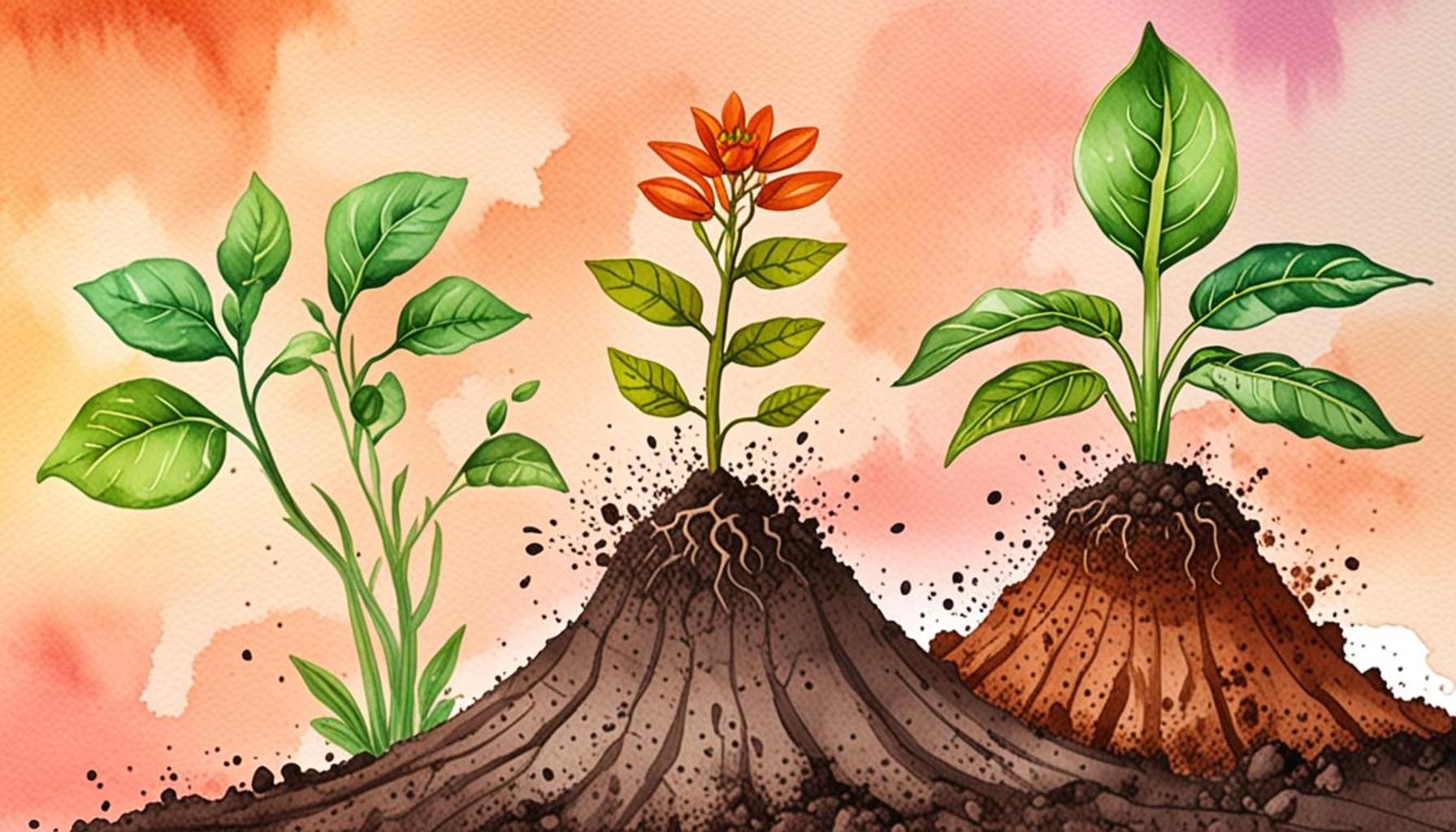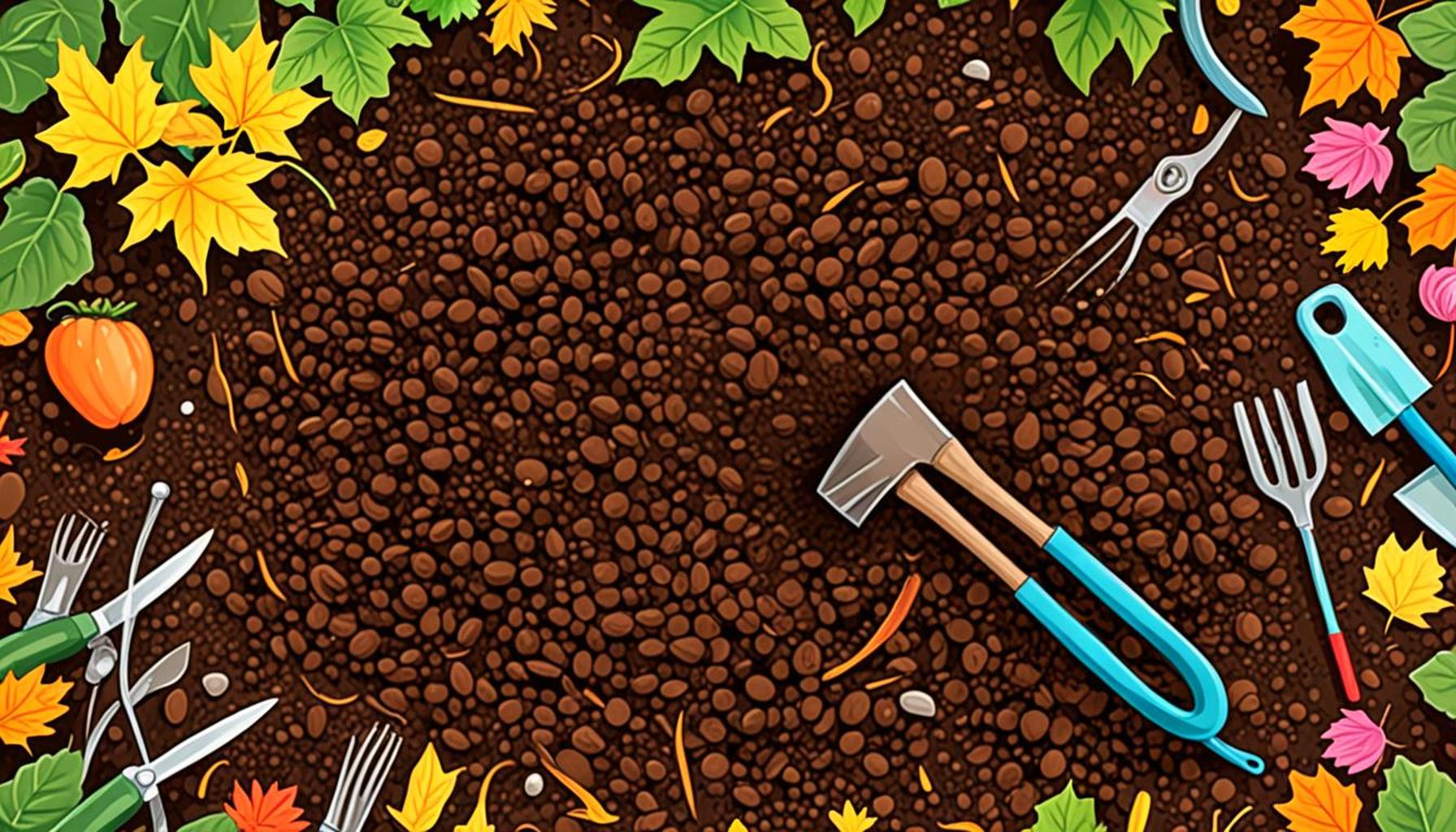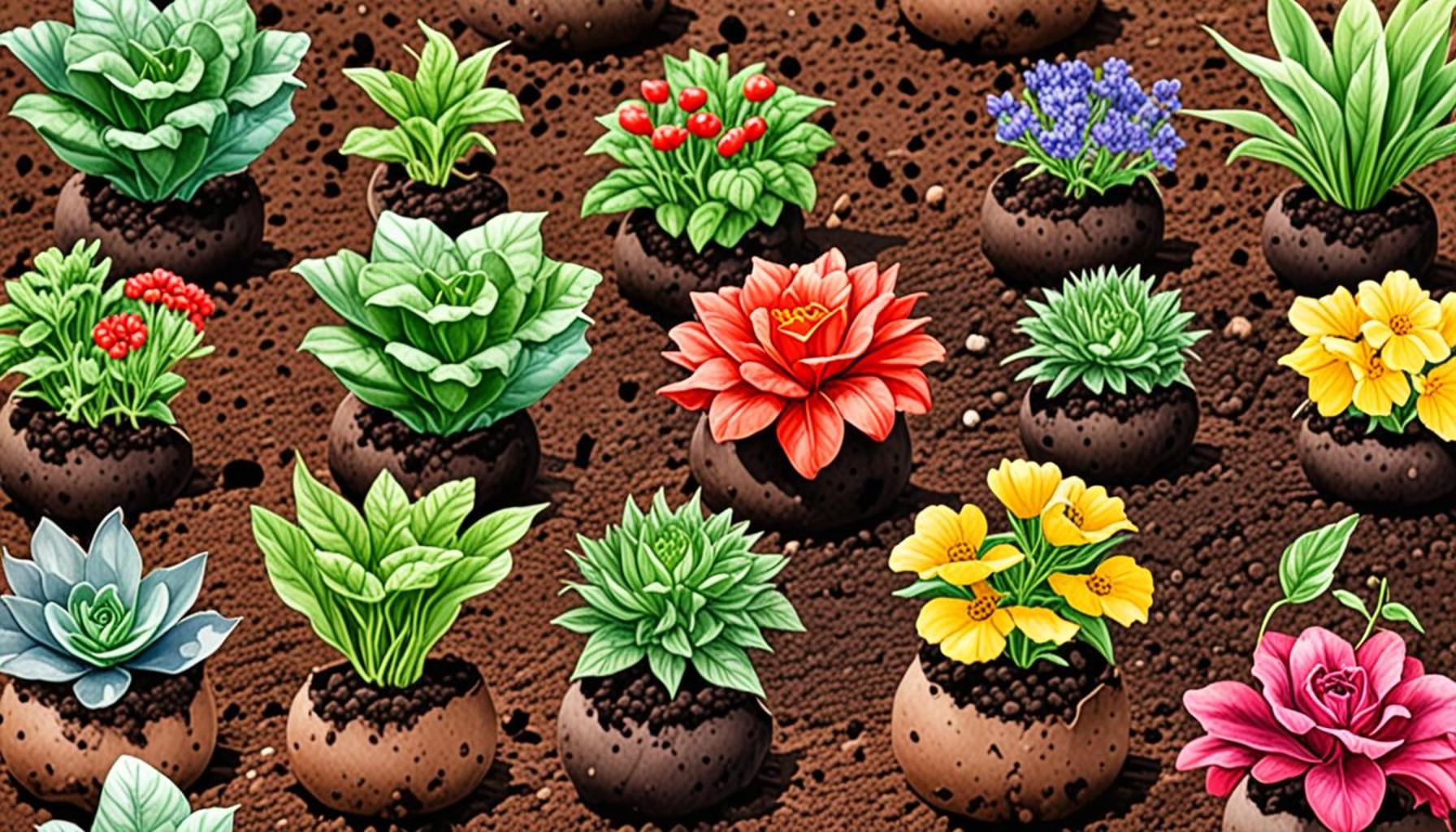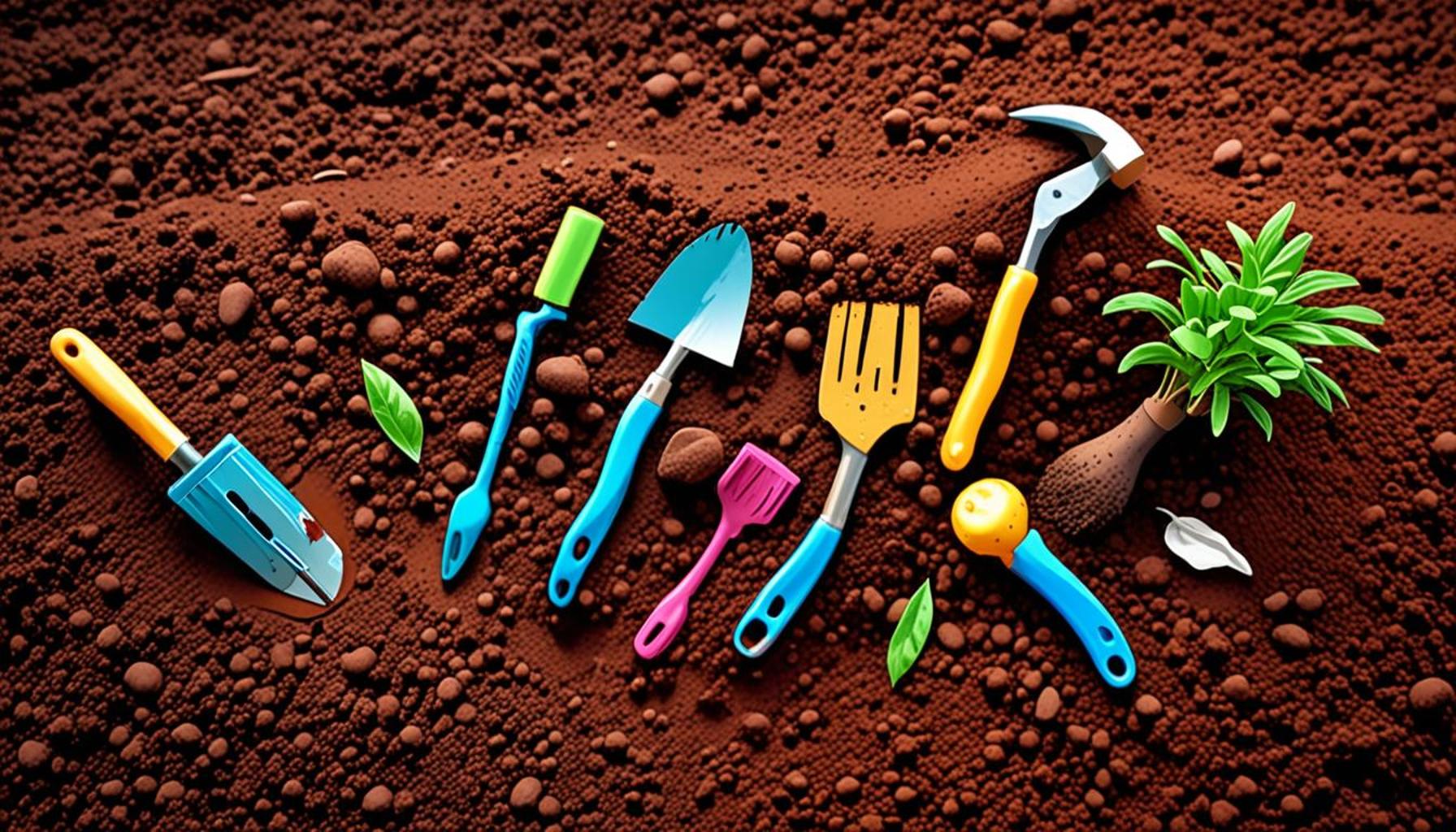How Soil Structure Affects Plant Growth: Facts for Beginners

Understanding Soil Structure
The foundation of any thriving garden or farm lies beneath the surface—it’s the soil. Understanding how soil structure impacts plant growth is essential for anyone looking to cultivate healthy vegetation. Well-structured soil does not simply support life; it plays a crucial role in the sustainability of ecosystems, impacting everything from plant health to the overall productivity of agricultural systems.
Soil structure refers to the arrangement of soil particles and the spaces between them, known as pore spaces. These structural arrangements significantly influence how water, air, and nutrients move through the soil, affecting plant health in various ways. Here are some primary factors influenced by soil structure:
- Water retention – Well-structured soil holds moisture more effectively, allowing plants to access water as needed. For instance, loamy soil, with its balanced texture of sand, silt, and clay, can retain moisture while draining excess water. This makes it ideal for garden vegetables that require consistent hydration but are prone to root rot when oversaturated.
- Nutrient availability – The arrangement of soil particles affects how nutrients are held and made available to plants. A crumbly, well-aerated soil allows for better microbial activity, which aids in nutrient cycling. For example, the rich, dark soils of the Midwest are renowned not just for their high organic matter content but also for their excellent nutrient-holding capacity, providing the perfect environment for crops like corn and soybeans.
- Root development – Loose, well-structured soil allows roots to penetrate deeper in search of moisture and nutrients, while compacted soil can severely hinder this growth. In compacted areas, such as regions that have high traffic from farm machinery, plants often display stunted growth, leading to reduced yields.
In the United States, soil health is critical, especially in agricultural regions like the Midwest, which leads the nation in crop production. Understanding how different soil structures can affect farm management decisions is essential whether you are cultivating fields or nurturing a small backyard garden. Soil testing services, available through many local cooperatives, can help gardeners and farmers identify their soil types and understand necessary amendments.
By grasping the significance of soil characteristics and management, interested gardeners and farmers alike can make informed decisions that promote robust plant growth. With modern practices such as cover cropping and reduced tillage, soil structure can be improved over time, leading to healthier ecosystems and enhanced productivity. As you explore the intricacies of soil and plant interactions, you’ll uncover an important layer of gardening and farming that is as complex as it is fascinating, ultimately driving the success of your green endeavors.
DISCOVER MORE: Click here to learn about the benefits of mulching
The Importance of Soil Texture
One of the key components of soil structure is its texture, which is primarily determined by the relative proportions of sand, silt, and clay particles. Each of these components plays a crucial role in how soil functions. For beginners, understanding soil texture is fundamental because it directly affects water retention, nutrient availability, and the overall health of plants.
Soil texture is classified into three main categories:
- Sand – Coarse and gritty, sandy soil drains quickly but does not retain moisture well. This type can lead to plants drought-stressed and struggling to survive, making it less ideal for moisture-loving crops.
- Silt – Silt particles are smaller than sand but larger than clay, giving this type a smooth texture. Silty soil retains moisture better than sandy soil but can become compacted easily, sometimes limiting drainage.
- Clay – Composed of tiny particles, clay soil has excellent nutrient-holding capabilities. However, its compact nature often leads to poor drainage and can suffocate plant roots if saturated.
Understanding the balance of these components in soil structure can help you choose the right plants for your garden. For example, if you’re working with primarily sandy soil, consider plants that are drought-resistant, such as succulents or certain herbs. Conversely, on a heavy clay soil, you might need to amend it with organic matter or select plants that thrive in those conditions, like native perennials, which adapt well to various soil environments.
How Soil Structure Influences Air and Water Flow
The arrangement of soil particles also significantly influences the movement of air and water within the soil. Soil composed of larger particles, such as sand, allows for rapid drainage and airflow. While this feature is beneficial, it becomes problematic if plants cannot access sufficient moisture. On the other hand, soils with smaller particles, like clay, may retain water but can restrict air movement, which is vital for root health and growth.
When roots cannot absorb adequate oxygen due to poor soil aeration, plants may exhibit symptoms such as wilting, yellowing leaves, or stunted growth. Thus, managing the balance of air flow and water retention is critical for fostering a successful growing environment.
Moreover, soil structure can change over time due to various factors such as land use, erosion, and organic matter decomposition. By regularly assessing your garden’s soil texture and structure, you can make timely amendments to enhance its quality. This might include adding compost to increase organic matter or using gypsum to improve clay soil structure, ultimately promoting better plant health.
In summary, grasping the intricacies of soil texture and structure is essential for any beginner gardener or farmer looking to optimize plant growth. The choices you make regarding soil amendments, plant selection, and watering practices will significantly impact the success of your green endeavors.
Understanding Soil Structure and Its Impact on Plant Growth
Soil structure plays a crucial role in plant health and development. The arrangement of soil particles affects water infiltration, nutrient absorption, and root development, which are vital for robust plant growth. A well-structured soil is characterized by a balanced composition of sand, silt, and clay, offering optimal conditions for plants. Loamy soils, for example, provide a perfect blend that retains moisture while allowing excess water to drain. This balance ensures that roots can respire effectively without the risk of rot due to waterlogging.Moreover, the soil’s texture directly influences the availability of nutrients. Clay soils, while rich in nutrients, can become compacted, limiting root growth. In contrast, sandy soils, although well-draining, may require regular fertilization to supply essential elements like nitrogen, phosphorus, and potassium. Additionally, soil structure affects the soil’s biological activity. Healthy microbial communities thrive in well-aerated soils, contributing to the nutrient cycling that is necessary for plant vigor. Practices such as adding organic matter, like compost or mulched leaves, can significantly improve soil structure by promoting aggregation and enhancing microbial diversity.In summary, understanding the relationship between soil structure and plant growth equips gardeners and farmers with the tools necessary to foster a thriving ecosystem. The steps taken to improve soil structure can lead to increased crop yields, healthier plants, and more sustainable agricultural practices. Therefore, it becomes imperative for those new to gardening or farming to recognize the significance of soil structure in their efforts to cultivate successful plant growth.
| Category | Advantages |
|---|---|
| Water Retention | Improved soil structure increases water-holding capacity, ensuring plants receive needed hydration. |
| Nutrient Absorption | Well-structured soil allows efficient absorption of minerals essential for plant growth. |
| Root Development | Loose soils promote stronger root systems, enabling better anchorage and nutrient uptake. |
| Biodiversity | Healthy soil structure fosters diverse microbial activity, vital for nutrient cycling and soil health. |
DISCOVER MORE: Click here for essential gardening tools
Understanding Soil Composition and Its Role in Plant Health
In addition to texture, another significant aspect of soil structure is its composition, which refers to the inorganic and organic materials present in the soil. Each component serves a unique function that contributes to the overall health of plants, making an understanding of soil composition vital, especially for beginner gardeners.
Soil typically consists of three primary components:
- Minerals – These are the building blocks of soil, originating from the weathering of rocks over time. Common minerals in soil include quartz, feldspar, and various clay minerals. Choosing the right plants for soils rich in minerals like potassium and phosphorus can enhance growth since these nutrients are essential for plant development.
- Organic Matter – Decomposed plant and animal materials enrich the soil with nutrients, improving both its fertility and structure. Organic matter helps with moisture retention and encourages microbial activity, both of which are essential for supporting healthy root systems. A soil rich in organic matter is often described as “living soil” due to its high level of biodiversity.
- Microorganisms – Bacteria, fungi, and other microorganisms play a pivotal role in soil health by breaking down organic matter and making nutrients available to plants. They also participate in processes like nitrogen fixation and organic matter decomposition, ensuring that soil remains fertile and plants receive the nutrients they need.
When assessing soil composition, beginners should be aware that achieving a proper balance among these components can lead to enhanced plant growth. For instance, if your soil is overly sandy and lacks organic matter, introducing compost can dramatically improve its water-holding capacity and nutrient content.
The Impact of Soil pH on Plant Growth
Another crucial element of soil structure is pH, which affects nutrient availability. Soil pH levels typically range from 0 to 14, with values below 7 indicating acidity and values above 7 indicating alkalinity. Most plants prefer a slightly acidic to neutral pH level (around 6 to 7.5) for optimal nutrient uptake.
For example, in acidic soils (pH below 6), certain nutrients such as aluminum can become more soluble and potentially toxic to plants. In contrast, alkaline soils may lead to deficiencies in vital nutrients like iron and manganese, causing symptoms of nutrient deficiency such as yellowing leaves—known as chlorosis.
Testing soil pH can lead to significant breakthroughs for beginners striving for a thriving garden. Soil amendments like lime can be used to raise pH in acidic soils, while sulfur can lower pH in alkaline soils. Understanding and adjusting soil pH parameters is crucial for promoting plant vitality and achieving productive yields.
In summary, grasping the relationships between soil texture, composition, and pH can elevate a beginner’s planting efforts to new heights. As you delve deeper into the world of soil structure, taking these factors into account will undoubtedly lead to improved plant health, growth, and vibrancy in your garden.
DIVE DEEPER: Click here to learn more about pest prevention tips
Conclusion: The Vital Connection Between Soil Structure and Plant Growth
In conclusion, understanding how soil structure affects plant growth is essential for anyone looking to cultivate a successful garden. As highlighted throughout this article, soil’s texture, composition, and pH levels play significant roles in determining the health and vitality of plants. For beginners, navigating this complex landscape can initially seem daunting, but armed with knowledge, you will be well-equipped to make informed decisions.
By prioritizing factors such as the right balance of minerals, enriching your soil with organic matter, and maintaining appropriate pH levels, you will create an environment where plants can thrive. Whether you are planting vegetables, flowers, or shrubs, the benefits of nurturing healthy soil cannot be overstated.
Furthermore, each garden presents unique challenges and opportunities. Engaging in practices like regular soil testing and the incorporation of compost not only enhances soil health but also fosters greater biodiversity, which is vital in today’s ecosystem. As a new gardener, remember that <soil health> is a dynamic status that can evolve over time with dedicated care and attention.
So, take the time to observe your soil, learn about its characteristics, and embrace the exciting journey ahead. The secrets of vibrant and flourishing plants lie in the heart of the earth beneath your feet. As you deepen your understanding of how soil structure affects plant growth, you will discover the transformative power that nurturing your soil can have, leading to a thriving garden that is a true reflection of your efforts.


